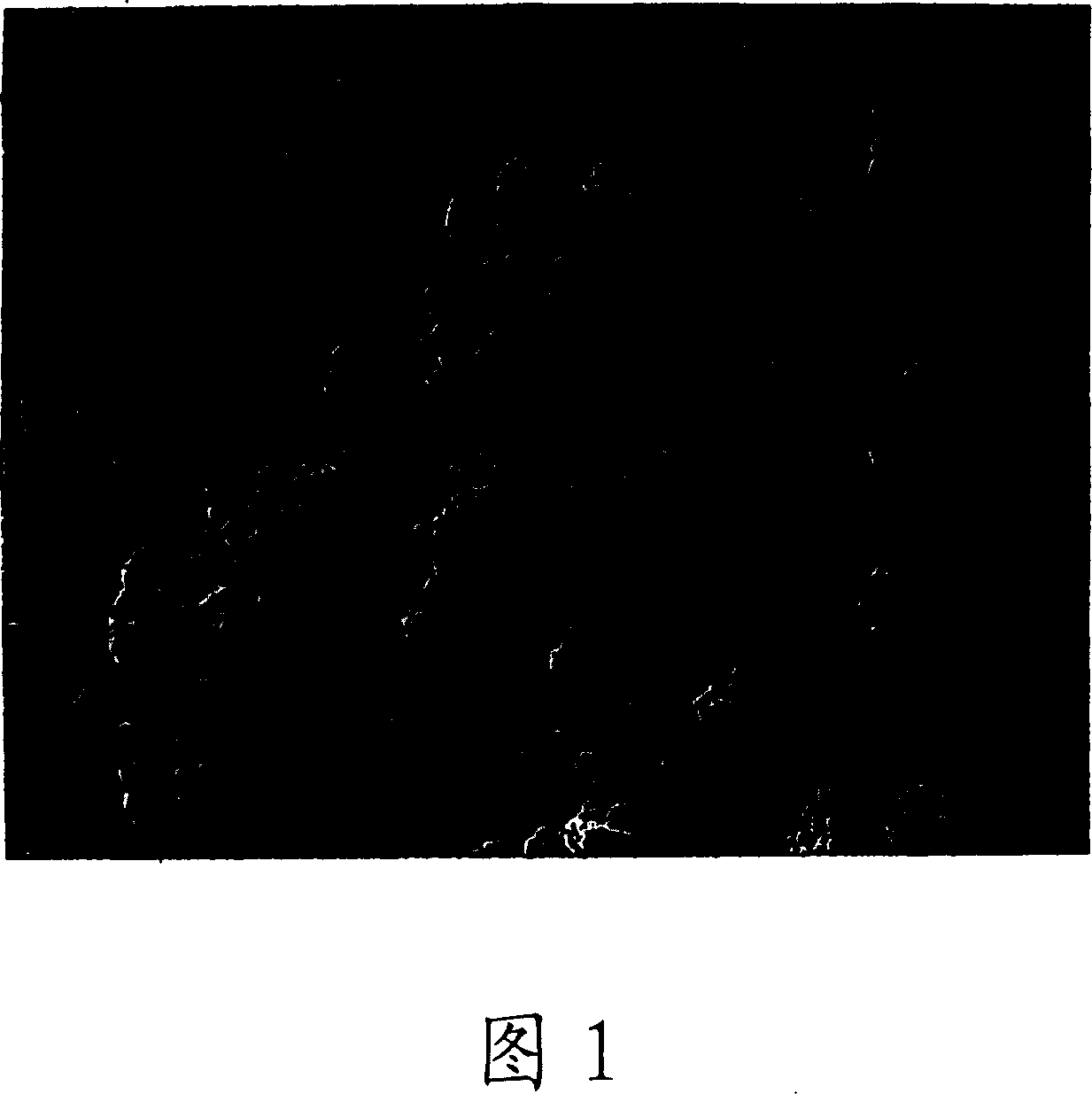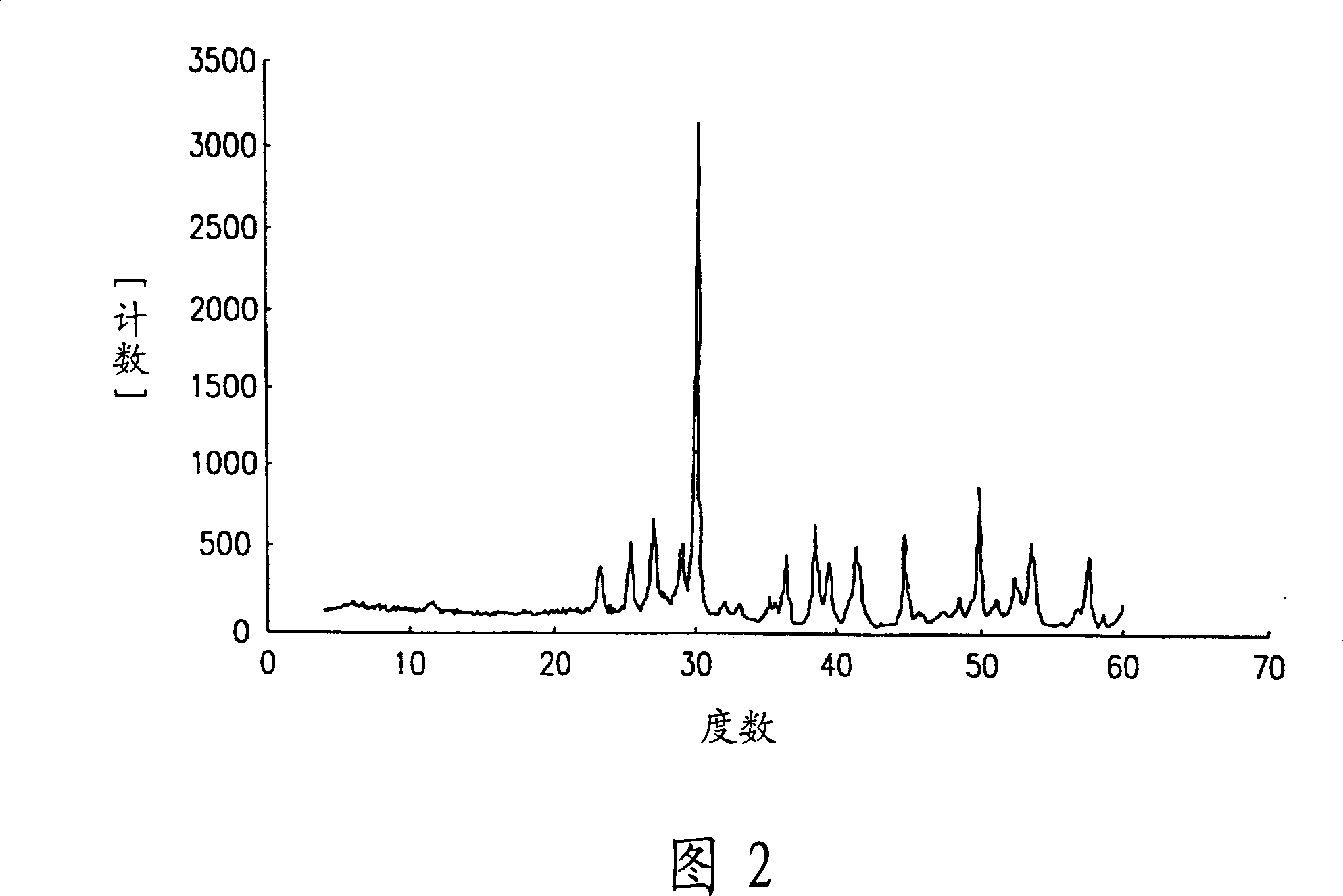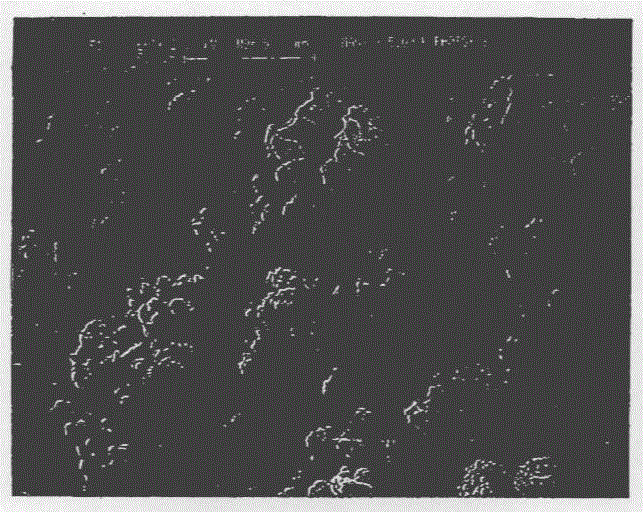Calcium metasilicates and methods for making the same
A technology of calcium metasilicate and calcium source, applied in the directions of botanical equipment and methods, application, silicate, etc., can solve the problems of low effective treatment dose, slowness and unevenness of antibiotics
- Summary
- Abstract
- Description
- Claims
- Application Information
AI Technical Summary
Problems solved by technology
Method used
Image
Examples
Embodiment 1
[0069] Calcium metasilicate was prepared by conventional methods of the prior art by combining 10 g of Hubersorb(R) 250 amorphous calcium silicate (available from J.M. Huber Corporation in Havre de Grace, Maryland) with 5.4 g in a V-shaped mill. Dry calcium hydroxide powder (Chemstone Corporation, Strasburg, VA) was mixed for 15 minutes. The mixture was then dehydrated (or "calcined") in an autoclave at 900°C for 4 hours. The final dehydration product was recovered, and its composition was determined to be calcium metasilicate by powder X-ray diffraction, mainly in the form of wollastonite, with a small amount of crystalline silica (cristobalite polymorph) simultaneously (see Table V below) . The properties of the calcium metasilicate of Example 1 are shown in Table IV below.
Embodiment 2
[0071] In the first step of this example, sulfuric acid is added to a dilute waterglass solution in a well-stirred vessel to affect the precipitation of amorphous hydrated silica to produce a calcium metasilicate suitable for use in the preparation of calcium metasilicate. of amorphous silica. Specifically, under stirring conditions at 95°C, 500 gallons of water glass solution containing 13% sodium silicate solids (SiO 2 / Na 2 A total of 278 gallons of 11.5% sulfuric acid was added at a rate of 4.7 gpm (gallons per minute) to a molar ratio of O of 3.3). Sulfuric acid was added continuously until the pH reached 5.5 and the reaction mixture was digested for 1 hour. The resulting suspension of silica particles is recovered by filtration, washed and dried to form a finely dispersed reactive silica powder. Then, in a stirring vessel, 90 kg of the aqueous solution (solid content 16%) of the reactive silica powder obtained above was mixed with 105 kg lime slurry (solid content 18%...
Embodiment 3
[0078] Prepare calcium metasilicate according to the method of the present invention, the method is that the pure Ca(OH) of 10.5g drying 2(from Chemstone Corporation) was mixed with 56.25 g of the reactive silica aqueous slurry (16% solids) prepared in Example 2 to obtain a homogeneous mixture. The mixture was then filtered to recover the solids, which were then dried at 105°C for 16 hours and then dehydrated (calcined) in a 900°C kiln for 1 hour. Characterization of the recovered product by X-ray powder diffraction revealed that it was wollastonite type 2M, which contained no trace of crystalline silica. The properties of the calcium metasilicate of Example 3 are shown in Table V below.
PUM
| Property | Measurement | Unit |
|---|---|---|
| oil absorption | aaaaa | aaaaa |
| particle size | aaaaa | aaaaa |
| hardness | aaaaa | aaaaa |
Abstract
Description
Claims
Application Information
 Login to View More
Login to View More - R&D
- Intellectual Property
- Life Sciences
- Materials
- Tech Scout
- Unparalleled Data Quality
- Higher Quality Content
- 60% Fewer Hallucinations
Browse by: Latest US Patents, China's latest patents, Technical Efficacy Thesaurus, Application Domain, Technology Topic, Popular Technical Reports.
© 2025 PatSnap. All rights reserved.Legal|Privacy policy|Modern Slavery Act Transparency Statement|Sitemap|About US| Contact US: help@patsnap.com



